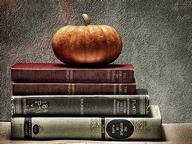Quiz Answer Key and Fun Facts
1. What Elie Wiesel autobiography began as a 900-page memoir written in Yiddish, but was later condensed, rewritten in French, and published in 1955 as "La Nuit" before being translated into English in 1960?
2. Which of the following is NOT a novel by Elie Wiesel?
3. In the novel "The Town Beyond the Wall", where does the main character travel to confront those who stood by and did not interfere when the Jews in his town were deported? Elie Wiesel later returned a prize from this country, saying it was "whitewashing" its role in collaborating with the Nazis.
4. Which of the following is a play by Elie Wiesel?
5. What memoir, published in 1999, was a follow-up to Elie Wiesel's earlier memoir "All Rivers Run to the Sea"?
6. Elie Wiesel's 1976 book "Messengers of God: Biblical Portraits & Legends" discusses all of the following biblical figures except which?
7. What novel features a Jewish child whose parents uproot him by fleeing Czechoslovakia and then entrust him to a young Christian cabaret singer?
8. What novel, originally published in 1962 as "The Accident", was the final installment in Elie Wiesel's "Night Trilogy", which also included "Night" and "Dawn"?
9. What Elie Wiesel book features a character named Moshe, who admits to a ritualistic murder of a Christian boy, a murder he did not commit, and then swears the community to secrecy?
10. In "Dawn," we encounter an eighteen-year-old Holocaust survivor who joins the Zionist movement and is assigned to execute a captured English army officer. What is the name of that officer?
11. In Elie Wiesel's "Hostage", the psychologist Raphael visits a psych ward where he interviews people who believe themselves to be what?
12. The novel "A Beggar in Jerusalem" takes place in the days following what war?
13. What book features a young man growing up in the campus turmoil of the 1960s who learns that his father is haunted by his role in the murder of an SS officer?
14. What 1952 historical event inspired Elie Wiesel's novel "The Testament"?
15. In a 1983 book, Elie Wiesel retells the legends associated with this mythical creature, said to have been made of clay and brought to life by the mystical incantations of a 16th century rabbi.
Source: Author
skylarb
This quiz was reviewed by FunTrivia editor
looney_tunes before going online.
Any errors found in FunTrivia content are routinely corrected through our feedback system.

